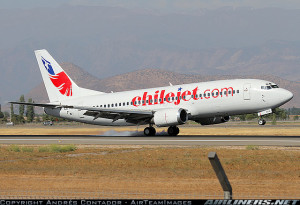VIP Configuration of Sukhoi Superjet 100 Certified
December 9, 2014
The Aviation Register of the Interstate Aviation Committee confirmed the possibility to equip the Sukhoi Superjet 100 aircraft with the enhanced comfort passenger cabin interior. This Major Change Approval to the baseline Sukhoi Superjet 100 Type Design, issued by IAC AR In late November 2014, confirms the safe operation of this aircraft type in the VIP configuration submitted for certification.
“Our Company is now engaged in the activities aimed to introduce the Sukhoi Superjet 100 business version. The SSJ100 business jet version will meet not only the highest requirements for comfort but also serve the demand for long non-stop flights which is increasingly evident in the changing business aviation market”, noted Ilia Tarasenko, President of Sukhoi Civil Aircraft Company. “The certification achieved on the enhanced comfort interior is another milestone in the planned development of the SSJ100 business version”.
The aircraft, which is based on the baseline RRJ-95B platform certificate, is characterized by the more comfortable passenger cabin achieved by fitting the newly-developed VIP-interior, the provision of higher level of service and the provision of on-board multimedia systems. Together, this makes it possible to both work and relax during flights.
The SSJ100 VIP interior is designed for 19 passengers, hosted in a passenger cabin divided into several sections.
The first and second section, intended for business meetings, are equipped with comfortable furniture, state-of-the-art multimedia systems and rotating-sliding seats.
The main passenger cabin is equipped with a full-scale working station, furniture to relax and a wardrobe. A separate lavatory is provided at the rear of the aircraft, just past the main passenger cabin.
The service section includes two cabin crew seats, a pantry-galley module with the latest equipment, a crew and passenger lavatory, as well as a wardrobe for passengers’ carry-on baggage.
The certified cabin configuration was designed with reference to the requirements of the launch customer, the Russian Government, which has placed a firm order for the new variant. The spacious cabin of the Sukhoi Superjet 100 allows for great flexibility in interior configurations, enabling the aircraft to meet all customer preferences and needs.
As a business jet, the Sukhoi Superjet 100 VIP is firmly placed in the Ultra Large category, characterized by long range and spacious cabins, while also offering very competitive acquisition and ownership costs.
Sitio especializado distingue a Lan Airlines
December 8, 2014
Junto a Lufthansa, Etihad y EVA Air, el sitio especializado Airlinerating-s.com distinguió a Lan Airlines como una de la cuatro mejores aerolíneas del mundo para viajes a larga distancia, siendo la única seleccionada a nivel latinamericano.
Chilejet dará inicio a sus operaciones en Chile
December 8, 2014
Cumplidos los requisitos exigidos por la autoridad aeronaútica chilena, Chilejet se encuentra próxima a dar comienzo a sus servicios al norte del país, con vuelos charter a las ciudades de Antofagasta y Calama.
Para ello empleará material Boeing 737-300.
LAN takes delivery of first A321
December 5, 2014
LAN Airlines, part of LATAM Airlines Group celebrated the arrival of its first A321 today at Santiago’s Comodoro Arturo Merino Benítez International Airport. This marks a significant milestone as LATAM Airlines affirms its regional and global presence as the largest A320 operator in Latin America. The aircraft, the first of 48 of its kind ordered by the airline, will be operated on domestic routes within Chile and joins LATAM Group’s existing fleet of nearly 230 A320 Family aircraft in operation.
The A321 aircraft ordered by LAN have a one-class configuration with 220 seats and feature a new LATAM Airlines Group’s cabin, which is a blend of LAN and TAM cabin designs.
The A320 family’s largest member offers the lowest fuel burn, emissions and noise footprint in its class, and allows for an extended operating range of up to 3,200 nautical miles while carrying a maximum passenger payload; all of which will enhance the efficiency of LAN’s operations within Chile
The A320 Family is Latin America’s and the world’s best-selling single aisle product line with nearly 11,000 orders to date and more than 6,200 aircraft delivered to 400 customers and operators worldwide. Today more than 500 A320 Family aircraft are operated by airlines in Latin America.
Armada de Chile consolida su capacidad de exploración aeromarítima
December 4, 2014
Habiendo finalizado con éxito las pruebas en vuelo del segundo Sistema de Control de Misión de sus aeronaves P3-ACH, proyecto a cargo de la empresa SISDEF Ltda., la Armada de Chile ha consolidado su capacidad de exploración aeromarítima, fundamental para un país de la proyección oceánica como lo es Chile.
Reabren aeródromo Teniente Marsh
December 4, 2014
Tras lograrse el retiro de la pista del aeródromo “Teniente Marsh”, Base Aérea Antártica Chilena “Presidente Eduardo Frei Montalva”, del avión Hércules C-130 de la Fuerza Aérea del Brasil que se accidentara al aterrizar en ella, nuevamente el campo aéreo ha quedado abierto a las operaciones aeronáuticas, con
Airbus Group and Safran Launch Joint Venture
December 3, 2014
· New Company With Initial Workforce of 450 Will be Named Airbus Safran Launchers
· Transaction Reaffirms Companies’ Determination to Boost Competitiveness and
Ensure Profitability of European Space Launcher Business
· ESA Approval of Industrial Ariane 6 Proposal Confirms the Relevance of the Joint
Venture
Amsterdam / Paris, 3 December 2014 – Airbus Group (stock exchange symbol: AIR) and Safran
(stock exchange symbol: SAF) have announced the creation of their new Joint Venture named Airbus
Safran Launchers.
With an initial workforce of around 450, starting operations on 1 January 2015, Airbus Safran
Launchers will maintain the outstanding level of quality and reliability of Ariane 5, while working on
a new family of state-of-the-art space launchers to foster Europe’s leading role in the space industry.
The new company will bring together the expertise of both Airbus Group and Safran in space
launchers at key Franco-German industrial sites. The Joint Venture’s headquarters will be located in
Issy-les-Moulineaux, near Paris.
This first transaction follows the announcement in June 2014 by Airbus Group and Safran regarding
their intention to pool their respective space launcher activities to boost competitiveness and ensure
the profitability of the European space launcher business in the face of growing international
competition.
Airbus Group and Safran welcome yesterday’s approval by the European Space Agency’s (ESA)
Ministerial Conference for the development and production of a new Ariane 6 space launcher.
Both companies have made a far-reaching industrial proposal for Ariane 6 and its endorsement was
critical for the Joint Venture’s creation. The industry proposal naturally assumes an in-principle
agreement for the transfer to the JV of shares in Arianespace held by the Centre National d’Etudes
Spatiales, France’s space agency.
“With this Joint Venture, industry has made a strong statement and has assumed leadership to foster
Europe’s autonomous access to space. Yesterday’s ESA Ministerial Conference will be remembered
as the one that decided upon a new Ariane launcher family for the next decades and opened a new
chapter in the way Europe conducts and manages its space ambitions. If we want to successfully
counter growing international competition and prevent the risk of Europe’s space sector from being
marginalized, a lot more has to be done. Therefore, we hope that this ESA Ministerial Conference
serves as a catalyst to transform the way institutional space agencies operate and interface with
industry in the future,” said Tom Enders, Chief Executive Officer of Airbus Group.
“The creation of Airbus Safran Launchers immediately after the Ministerial Conference is much more
than a symbol, it is a sign of our strong engagement and our ability to deploy our resources and meet
our commitments. This is precisely what we will continue to do to ensure that all stakeholders –
industry and European States – are able to pursue the remarkable success of the Ariane programme
and continue to guarantee independent, reliable and competitive access to space for Europe.
I strongly believe Airbus Safran Launchers will be a major worldwide player in the launcher domain,
poised to capture market growth and better serve institutional as well as commercial customers.
Indeed, Europe has all it needs to be in a pole position in the race for technologies, which will be, as in
the past, highly beneficial for the whole aerospace industry,” said Jean-Paul Herteman, Chairman and
Chief Executive Officer of Safran.
Enders and Herteman also thanked the teams at Airbus Group and Safran who over the last months
have prepared the establishment of the new company in record time. With the support of customers
and shareholders, most regulatory approvals and consultations such as those from the competition
authorities, Arianespace and the two Groups’ Works Councils have been completed for the
transaction. Closing is expected on 31 December 2014 after completion of final formalities.
This signature launches the first, initial phase of the transaction. In a second phase, all activities of
Airbus Group and Safran dealing with space launchers will be integrated in the Joint Venture.
Russian Helicopters start delivering new batch of Mi-171Sh to Peru
December 3, 2014
Moscow / 03 December 2014
Russian Helicopters (part of State Corporation Rostec) has delivered the first batch of four Mi-171Sh military transport helicopters, made by Ulan-Ude Aviation Plant, to the Ministry of Defence of Peru. The Mi-171Sh are being delivered to Peru a month ahead of schedule. The customer also received aviation equipment required for its operation in addition to the helicopters.
The helicopters were supplied under a contract concluded with Rosoboronexport, Russian Helicopters’ partner in the export of military products. This contract was the largest to be concluded in the recent history of military and technical cooperation with Peru and was one of the largest in the global market for military transport helicopters.
Under the contract concluded in December 2013, 24 helicopters will be supplied to Peru: eight in 2014, with the rest to follow in 2015. A maintenance centre for Russian Helicopters will also be established in Peru, which will make it possible to keep the country’s helicopter fleet in a constant state of operational readiness, and to use them effectively in counter-narcotics and counter-terrorism operations.
The Mi-171Sh helicopters and aviation equipment were delivered to Peru by an An-124 ‘Ruslan’ transport plane, and were handed over to the Armed Forces’ Army Aviation brigade. On 9 December they are due to take part in celebrations to mark Army Day in Peru. It is anticipated that by then, all four helicopters will have undergone final acceptance testing, on the basis of which the Ministry of Defence committee should sign the acceptance document and approve the equipment for Army use.
The Mi-171Sh multirole military transport helicopters supplied under contract are equipped with the latest systems boosting their combat efficiency, providing comprehensive protection of their main systems and crew from attack, and avionics suites that enable them to fly in adverse weather conditions and at any time of day or night.
The helicopters can carry up to 26 paratroopers. They are equipped with two sliding doors and electro-hydraulic ramp, making a full ground-troop landing possible within just 7-8 seconds. As the customer requested, the helicopters are painted in Peru Army colours.
Peru’s Armed Forces already operate Russian helicopters. In July 2010, Peru’s Armed Forces purchased eight Russian helicopters (six military-transport Mi-171Sh and two attack Mi-35P), and delivery on these orders was completed in October 2011. In total, since the 1970s, about 100 Soviet and Russian-made helicopters have been delivered to Peru, where the army has for a long time already been operating Russian Mi-8/17 and Mi-24/35 type helicopters.
Operators rate Russian-made helicopters very highly, noting their outstanding flight capabilities, high reliability, ease of operation and maintenance, and the fact that they can be operated in adverse conditions. The armed forces of many different countries value the universality of Mi-8/17 type helicopters, which have proved themselves in numerous local conflicts, in counter-terror operations and police assignments. Mi-8/17 helicopters have demonstrated their superior performance and efficiency in disaster response work following floods and earthquakes, and other natural and man-made disasters, in search and rescue operations and in evacuating those affected.
Boeing Conducts World’s First Flight with ‘Green Diesel’ as Aviation Biofuel
December 3, 2014
ecoDemonstrator 787 flies on sustainable fuel made from vegetable oil, waste animal fat
Testing supports industry efforts to approve widely available biofuel for aviation
SEATTLE, Dec. 3, 2014 /PRNewswire/ — Boeing [NYSE: BA] has completed the world’s first flight using “green diesel,” a sustainable biofuel that is widely available and used in ground transportation. The company powered its ecoDemonstrator 787 flight test airplane yesterday with a blend of 15 percent green diesel and 85 percent petroleum jet fuel in the left engine.
“Green diesel offers a tremendous opportunity to make sustainable aviation biofuel more available and more affordable for our customers,” said Julie Felgar, managing director of Environmental Strategy and Integration, Boeing Commercial Airplanes. “We will provide data from several ecoDemonstrator flights to support efforts to approve this fuel for commercial aviation and help meet our industry’s environmental goals.”
Sustainable green diesel is made from vegetable oils, waste cooking oil and waste animal fats. Boeing previously found that this fuel is chemically similar to HEFA (hydro-processed esters and fatty acids) aviation biofuel approved in 2011. Green diesel is chemically distinct and a different fuel product than “biodiesel,” which also is used in ground transportation.
With production capacity of 800 million gallons (3 billion liters) in the U.S., Europe and Asia, green diesel could rapidly supply as much as 1 percent of global jet fuel demand. With a wholesale cost of about $3 per gallon, inclusive of U.S. government incentives, green diesel approaches price parity with petroleum jet fuel.
“The airplane performed as designed with the green diesel blend, just as it does with conventional jet fuel,” said Capt. Mike Carriker, Chief Pilot, Product Development and 777X, Boeing Test and Evaluation. “This is exactly what we want to see in flight tests with a new type of fuel.”
Green diesel is among more than 25 new technologies being tested by Boeing’s ecoDemonstrator Program aboard 787 Dreamliner ZA004. The program accelerates the testing, refinement, and use of new technologies and methods that can improve aviation’s environmental performance.
On a lifecycle basis, sustainably produced green diesel reduces carbon emissions by 50 to 90 percent compared to fossil fuel, according to Finland-based Neste Oil, which supplied green diesel for the ecoDemonstrator 787. The flight test was coordinated with the U.S. Federal Aviation Administration, Rolls-Royce and Pratt & Whitney, and EPIC Aviation blended the fuel.
Airbus Helicopters nombra a Yves Barillé director de la Comunicación
December 3, 2014
Marignane, Francia, 3 de diciembre de 2014
Yves Barillé es el futuro director de la Comunicación de Airbus Helicopters.
Barillé asumirá sus nuevas funciones en marzo de 2015 y será responsable de la comunicación interna y externa de Airbus Helicopters, dependiendo jerárquicamente del presidente y consejero delegado de la empresa, Guillaume Faury.
Barillé, dirigía desde 2008 el departamento de la comunicación del Grupo MBDA, líder mundial en el sector de misiles y sistemas de misil.
Barillé, de 48 años, comenzó su carrera en 1991 en la sede del grupo Aerospatiale antes de asumir la gestión de la Comunicación Interna de Aerospatial Airbus en Toulouse, en 1992. En el año 2000 se integró en Matra Bae Dynamics para preparar la fusión de las dos empresas que formarían MBDA en 2001.
Antes de convertirse en director de la Comunicación de MBDA, Barillé fue director de la Comunicación interna del grupo y director de la Comunicación adjunto.
El nuevo director de la Comunicación de Airbus Helicopters sucede en el cargo a Cécile Vion-Lanctuit, que prosigue su carrera fuera del Grupo.









